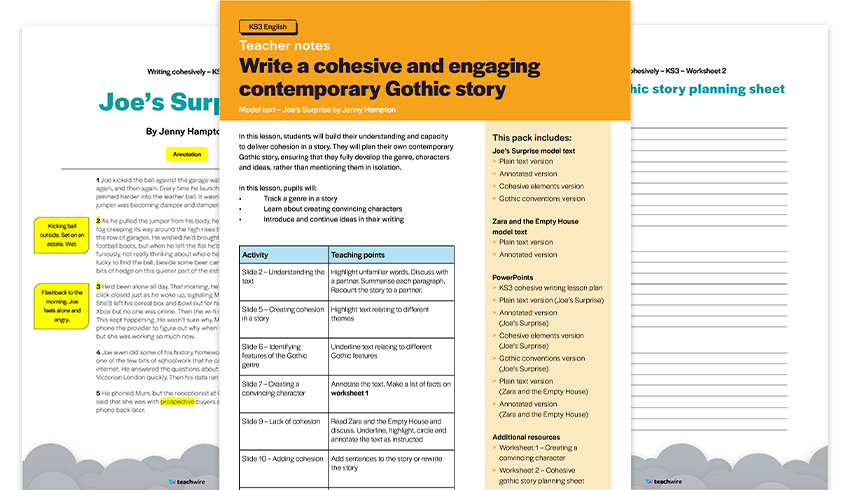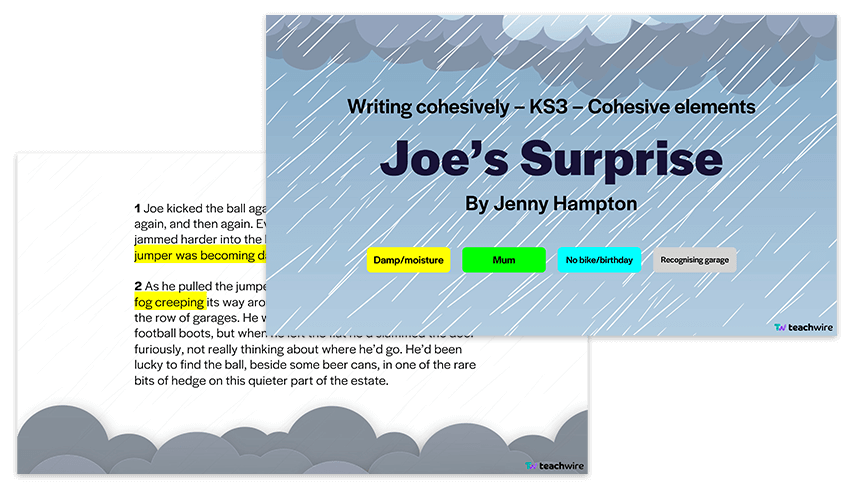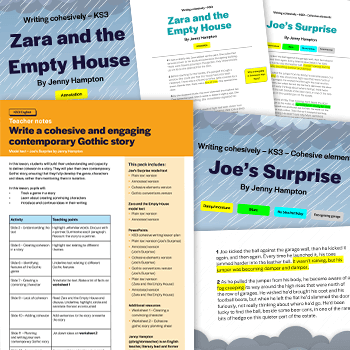In this lesson, students will build their understanding and capacity to include cohesive devices in a story. They will plan their own contemporary Gothic story, ensuring that they fully develop the genre, characters and ideas, rather than mentioning them in isolation.
In this lesson, pupils will:
- Track a genre in a story
- Learn about creating convincing characters
- Introduce and continue ideas in their writing
Cohesive devices resources
This download contains two model texts (in Word, PDF and PowerPoint formats), a PowerPoint lesson plan, teacher notes and two worksheets.

What are cohesive devices?
When something is cohesive, it means that all of the different parts work together to make it whole. This means that some ideas and images run through the whole text.
In a piece of cohesive writing, the author provides clues to what eventually might happen, so that it is convincing for the reader. (This is also called foreshadowing).
First activity
- Read the model text, Joe’s Surprise. Highlight any words, phrases or sentences that you are unsure about. Visualise what is happening while you read.
- Discuss with your partner anything you are unsure about. Refer to the glossary.
- Reread the text. Summarise in words or draw images to sum up each paragraph.
- Recount the whole story to your partner. Do they think you have missed anything? Listen to them recount the story. Do you think they have missed anything?

Final activity
Write your own short story featuring cohesive devices.
- Keep your story simple with one central character
- Use the idea of someone entering a building and being rescued by a family member/friend
- Reread the model text for ideas
Jenny Hampton (@brightonteacher) is an English teacher, literacy lead and former SLE (literacy). Download our Year 7 and Year 8 English worksheets.














